General
Was Walt Disney an anti-Semite? Not according to The Wizard of Oz

Sorry I’ve been away for a couple of days. So what did I
miss?
Ah, yeah. Meryl Streep’s speech at the National Board of Review awards. Where
— before she handed Emma Thompson the best actress award for her stellar
performance in “Saving Mr. Banks” — Streep first went out of her way
to attack the late Walt Disney. Calling him racist, sexist and anti-Semitic.
Look, Floyd Norman has already effectively addressed the racism issue. And Amid
Amidi did a great job of debunking Meryl’s claim that ” … Walt hated
woman and cats.” As for me … Well, I’d like to try & use one of the
greatest fantasy films of all time — MGM‘s “The Wizard of Oz” — to
prove once & for all that Walt Disney wasn’t an anti-Semite.

Copyright 1939 Metro-Goldwyn-Mayer. All rights reserved
Okay. So let’s start with the very term
“anti-Semite.” Which — according to FreeDictionary.com — is “
… a person who discriminates against or is prejudiced or hostile toward Jews.”
Now let me introduce you to a key player in the development of “The
Wonderful Wizard of Oz” as a major motion picture. And that’s industry
pioneer Samuel Goldwyn, who was born in Warsaw
in a Polish shtetl back in July of 1879. Raised as a Hasidic Jew with his only
formal education coming from those few years that he spent in Hebrew school,
Goldwyn always like to tell the story of how — when he was only 12 years-old
— Samuel walked across Europe and eventually immigrated to North America. Once
there, Goldwyn made his way from Nova Scotia
to New York City. Whereupon Samuel “anglicized”
the name he was born with (i.e., Shmuel Gelbfisz) and became Sam Goldfish.
Now let’s jump ahead to May of 1933. And Sam Goldfish (who
is now known as Samuel Goldwyn and is already one of the true giants in Hollywood
history) catches a screening of “Three Little Pigs.” And what does
Sam see as he views this animated short? Well, yes, he see a brief unfortunate
joke that does feature the stereotypical Jewish peddler …

Copyright Disney Enterprises, Inc. All rights reserved
(Though — to be fair here — were you to view a sampling of animated cartoons
that had been produced by the other major
studios during this exact same period in Hollywood history, you’d see that ethnic
humor was one of the mainstays of animation during this era in American entertainment.
It was something that the movie-going public readily accepted & genuinely seemed
to enjoy during this time in our country’s history. More to the point, when
Walt realized that these sorts of gags were no longer considered palatable by
the greater movie-going public, he had the offensive sequence trimmed &
re-animated.)
… Anyway … Now getting back to Samuel Goldwyn and
Disney’s “Three Little Pigs.” What does Goldwyn see as he views this
soon-to-be Academy Award-winning short? He sees the future. To be specific: A time
when movie-goers will hunger for similar sorts of Technicolor fantasies, only
the feature-length kind.
And given that Samuel now prides himself on being a fully
assimilated American, he wants his studio to make a distinctly American film
fantasy. Which is why — according to Jay Scarfone & William Stillman’s “The
Wizard of Oz: The Official 75th Anniversary Companion
” (Harper Design,
October 2013) — Goldwyn reaches out to Frank J. Baum, the son of the late L.
Frank Baum and offers to buy the screen rights to “The Wonderful Wizard of
Oz.”

Copyright 2013 Harper Design. All rights reserved
Now what’s kind of interesting about all this is — just prior to Samuel’s
attempt to snag the screen rights to “The Wonderful Wizard of Oz” in
mid-to-late 1933 — MGM had also been talking with the Baum family. That studio
had seen the huge success that Walt was having with his “Silly
Symphonies” series and now wanted to get in the animation business in the
worst way. And the idea that MGM executives came up — which they hoped would
eventually turn into some serious competition for Disney’s Mickey Mouse cartoons
— was to do a series of full-color animated shorts built around Baum’s
“Oz” characters.
Unfortunately for MGM, Frank J. Baum and L. Frank’s widow,
Maude, thought the amount that this studio was offering for the rights to use
the “Oz” characters in animation was far too low. So when Samuel
Goldwyn came along and offer them $40,000 for the screen rights to “The
Wonderful Wizard of Oz,” the Baum family immediately said “Yes.”
Another interesting side note: On the heels of the “Three Little Pig”
‘s huge success, Walt finally got serious about the idea of producing a
full-length animated feature. And what was one of the stories that he
considered as possible fodder for Disney Studio’s first full-length feature? You guessed it. L.
Frank Baum‘s “The Wonderful Wizard of Oz.” As the story goes, Walt
asked his brother Roy to discreetly make inquiries about whether the screen
rights to this book was still available in early 1934. Only to then have the Hollywood
trades break the news on January 26,
1934 that Goldwyn had officially scored the screen rights to
“The Wonderful Wizard of Oz.”

Copyright Disney Enterprises, Inc. All rights reserved
And just so you know: When it came to the movie version of
“Oz” that Samuel wanted to make, the connections between that project
and Disney’s “Three Little Pigs” were quite strong. Goldwyn even went
so far as to hire Ann Ronell (who wrote the lyrics for the hit song from that
animated short, “Who’s Afraid of the Big Bad Wolf?”) to do the songs
for his proposed “Oz” production.
And in another weird parallel between the way that Samuel
Goldwyn & Walt Disney thought, according to Scarfone & Stillman …
… When negotiating with the Baum family to purchase the
screen rights (to this book), Goldwyn had contemplated The Wizard of Oz as a
Technicolor talkie with Mary Pickford in the lead.

This is the only remaining frame of Mary Pickford’s Technicolor
test for Disney’s proposed live-action / animated version of
“Alice in Wonderland.” The rest of this test footage dis-
appeared decades ago. Copyright Disney Enterprises,
Inc. All rights reserved
“What’s so weird about that?,” you say. Well, in
early 1933 when Walt was actively looking for a hook to build Disney Studios’
first full-length feature around, he actually shot a Technicolor test with
screen legend Mary Pickford. With the idea being that this then-41 year-old
actress would then be the only human performer in an all-animated version of
Lewis Carroll’s “Alice in
Wonderland.” (Which — if you know your Disney history — given that, just
10 years earlier, Walt had burst on the scene in Hollywood by being the guy who
made that “Alice in Cartoonland” short. Which featured 5 year-old
Virginia Davis capering with cartoon characters … Well, that would have been
kind of intriguing to have Walt revisit the idea that had initially helped him
break through in Tinsel Town
as the way for his studio to now expand into features).
But as the two images that I’ve folded into this article
show, by 1933, “America’s
Sweetheart” could no longer really pull off the sort of ingenue roles that
she’d built her fabled film career on. Which is perhaps why — just after this
“Alice in Wonderland”
test at Disney Studios — Mary officially announced her retirement from
on-screen acting. Though she would then continue to produce films at United
Artists (i.e., the movie studio that Pickford formed back in 1919 with Charlie
Chaplin, D. W. Griffith and her then-soon-to-be-husband, Douglas Fairbanks).

Copyright Disney Enterprises, Inc. All rights reserved
Getting back to Samuel Goldwyn’s proposed movie version of
“The Wonderful Wizard of Oz” now: While his studio let word leak in
1936 that they were considering child star Marcia Mae Jones for the role of Dorothy,
“Oz” never really moved into active development at Goldwyn. Some say
this was because the writers that Sam hired for this proposed production never
delivered a screenplay that he liked. Still other have suggested that it was
Goldwyn’s mercurial nature, his infamous indecision, that ultimately did the
project in.
All that is known is that …
In December of 1937, Goldwyn momentarily became disenchanted
with the picture business and — on a whim — began divesting himself of the various story properties that
he owned. Most significantly, Samuel began entertaining offers on The Wizard of
Oz, and a bidding war ensued.

Samuel Goldwyn
Now — to be blunt here — Samuel’s timing (at least when it
came to the sale of the screen rights to “The Wonderful Wizard of
Oz”) couldn’t have been worse. For December 21, 1937, “Snow White and the Seven
Dwarfs
” premiered at the Carthay Circle Theater.
And as Disney’s first full-length animated feature began its nationwide roll-out
in February of 1938 and then began racking up record-breaking sales (For a
brief while there, “Snow White” was actually the highest grossing
sound film in Hollywood history), there was the cinematic equivalent of the
Oklahoma land rush. As the whole of Hollywood
seemingly hurrying to get into the feature-length fantasy film business.
It’s now time to bring our second key player in the
development of “The Wonderful Wizard of Oz” as a major motion picture
on the scene. And that’s legendary movie producer & director Mervyn LeRoy. Born in San
Francisco in October of 1890 to Jewish parents Edna
(née Armer) and Harry LeRoy, Mervyn’s family (which owned a successful
department store in the city) was financially ruined by the Great Earthquake of
1906.
To help make money for his family out during this extreme
tough time, LeRoy (just as the young Walt Disney did) sold newspapers. As he
grew older, Mervyn drifted into the world of entertainment. First as a singer
and a dancer, and eventually — as he transitioned from vaudeville to silent
film — as a director of highly successful motion pictures like “Little
Caesar
.”

Copyright Warner Bros. All rights reserved
Which is why — on February 3, 1938
— MGM brought LeRoy onboard as a producer. With the hope that Mervyn would
then become create some highly successful films for that studio as well. And
what’s the very first thing that LeRoy did after he arrived at MGM? He makes
sure that Metro-Goldwyn-Mayer outbid Twentieth Century Fox for the screen
rights to “The Wonderful World of Oz.” Fox had been pursuing this
property as a possible vehicle for Shirley Temple. But at Mervyn’s urging, MGM
swooped in at the very last minute. And on February 18, 1938, MGM won the screen rights to
“The Wonderful Wizard of Oz” by offering to pay Samuel Goldwyn
$75,000 for the property.
Mind you, not everyone in Hollywood
was happy that MGM now owned the screen rights to “Oz.” As Scarfone
& Stillman recall in their “The Wizard of Oz: The Official 75th
Anniversary Companion,” Hollywood columnist Paul
Harrison snarked in a March 16, 1938
story that …
… I hope the ghost of L. Frank Baum gives Samuel Goldwyn a
good haunting for not selling the rights to The Wizard of Oz books to Walt
Disney.

Cecil B DeMille
Now why would Harrison say something like that? Well, you
have to understand that — on the heels of “Snow White” ‘s success —
all of Hollywood was hailing Walt
as Tinsel Town’s
new resident genius. I mean, you had industry giants like Cecil B. DeMille
sending telegrams to the studio saying that ” … I wish I could make
pictures like Snow White.” And as Neal Gabler recounts in his “Walt
Disney: The Triumph of the American Imagination” (Knopf, October 2006) …
Critic Gilbert Seldes, long a Disney admirer and advocate,
was given a private screening (of ‘Snow White’) and left saying “he
thought Metro Goldwyn might just as well close their studios as long as you
produce feature films.”
So you could perhaps understand why the Hollywood press
would react negatively when LeRoy announced that MGM’s version of “The
Wonderful Wizard of Oz” wouldn’t be an animated feature. But — rather —
a live-action musical which would simulate a cartoon.

(L to R) William Austin as the Gryphon, Charlotte Henry as Alice and Cary Grant
as the Mock Turtle in the 1933 live-action version of “Alice in Wonderland.”
Copyright Paramount Pictures. All rights reserved
“And why would the Hollywood
press react negatively to that particular piece of news?,” you query.
Because there were a lot of people in town who still remembered what a train
wreck Paramount’s live-action
version of “Alice in
Wonderland
” had been back in 1933.
On paper, this motion picture looked like it was going to be a smash hit.
Paramount Pictures had loaded up this live-action version of Lewis Carroll‘s
books with the biggest stars of the day. We’re talking about people like W. C.
Fields playing Humpty Dumpty, Cary Grant as the Mock Turtle and Gary Cooper as
the White Knight. With each of these performers decked out in elaborate
costumes & make-ups which attempted to duplicate the exact look of John
Tenniel’s pen-and-ink illustrations for the Alice
book. But given the limitation of make-up back in the 1930s (or — to be
completely blunt here — given that the make-up department at Paramount
couldn’t compete with what Jack Pierce & his team were doing over at
Universal), what was supposed to be a family-friendly film wound up being more
of a horror movie.
Paramount’s
elaborate costumes and make-ups made it so members of the audience couldn’t
actually recognize most of the big-name stars who were appearing in this motion
picture. I mean, look at the photo below. Is there anything about this image
that lets you know that this frog footman is actually being played by Disney Legend
Sterling Holloway (i.e., the voice of the stork in “Dumbo
,” the
Cheshire Cat in Disney’s animated version of “Alice in Wonderland
,”
Kaa the Snake in “The Jungle Book
,” not to mention the voice of the
title character in Disney’s “Winnie the Pooh and the Hunny Tree
“)?

An on-the-set / in-production shot of the 1933 live-action version of “Alice in
Wonderland.” Copyright Paramount Pictures. All rights reserved
Given how badly Paramount Pictures’ “Alice
in Wonderland” crashed & burned when it was released to theaters in
December of 1933 … Well, that was one of the main reasons that Goldwyn backed
away from doing his live-action version of “The Wonderful Wizard of
Oz.” Not to mention giving Walt pause when it came to doing that
live-action / animated version of “Alice”
that Disney Studios was (at that time, anyway) thinking of co-producing with
Mary Pickford. More to the point, when LeRoy announced that “The Wizard of Oz” was going to be this live-action musical that would simulate the look & feel of a feature-length cartoon … Well, to many in Tinsel Town, that just made it sound as if MGM were about to repeat all of the mistakes that Paramount had made with its live-action “Alice in Wonderland.”
Ah, but what many Hollywood observers didn’t
understand was that Meryn LeRoy actually held Walt Disney in extremely high
esteem.
In later years, Mervyn stated that Walt was one of only two
geniuses that he had ever met — MGM producer Irving Thalberg being the second.

Walt Disney and Shirley Temple at the 1939 Academy
Awards ceremony
(In fact), LeRoy so admired Disney that he was the member of
the Motion Picture Academy who came up with the idea of giving Walt one Oscar
statuette plus seven small ones when he was honored for “Snow White”
at the eleventh annual Academy Awards in February 1939.
So given that Mervyn thought so highly of Walt, LeRoy didn’t
hesitate to reach out to Disney when he felt MGM’s “The Wizard of Oz”
(Mervyn had snipped the “Marvelous” off of this proposed motion
picture’s title as soon as Metro had acquired the screen rights to Baum’s book)
was going off-track. As Scarfone & Stillman recounted in their “The
Wizard of Oz: The Official 75th Anniversary Companion” …
… Dissatisfied with a flurry of meandering Wizard of Oz
script drafts and rewrites from more than two months prior — all contributed
to by various screenwriters — the producer sought to revitalize his production
team’s mind-set about the elements of successful fantasy. On May 10, 1938, LeRoy screened Snow White and the
Seven Dwarfs at M-G-M, the print on loan directly from Walt Disney himself at
LeRoy’s request. Among the production staff undoubtedly in attendance were
songwriters Harold Arlen and E.Y. Harburg, who had begun their association with
The Wizard of Oz just the day before.

Copyright Disney Enterprises, Inc. All rights reserved
Not just to circle back on the central premise of today’s
piece: If Walt Disney actually were the sort of anti-Semite that people like
Meryl Streep seem to think that he was, then why would Walt repeatedly go out
of his way to help someone like Mervyn LeRoy? Who was, after all, a Jew?
And when I say “repeatedly,” I mean repeatedly.
Look at the huge favor that Walt did for Mervyn once principal photography on
“The Wizard of Oz” had wrapped back in February 1939.
(Now that this motion picture was complete) save for
post-production and retakes, LeRoy turned his attention to marketing his movie
characters, and went straight to the best for outside expertise: Walt Disney.
Like any self-made mogul, Disney was fiercely protective of his brand, yet he
didn’t see The Wizard of Oz as a threat to his domain, in equal parts perhaps
the film was live-action and because he and LeRoy had a genuine rapport. In an
affable gesture, Disney put LeRoy in touch with Herman “Kay” Kamen
… Kamen had achieved remarkable success leading Disney character merchandise
throughout the 1930s. (Kamen wasn’t a Disney employee but an independent
contractor free to pursue outside business ventures, provided there was no
conflict of interest with his primary work for Disney).

Kay Kamen and Walt Disney in Walt’s office pose for a publicity shot.
Copyright Disney Enterprises, Inc. All rights reserved
Now it’s important to understand here is that Kay Kamen —
like Mervyn LeRoy — was a Jew. More to the point, Disney’s New York-based
merchandising office had so many Jewish employees working there that Kay used
to joke that the place ” … had
more Jews than the Book of Leviticus.”
Disney even went further than this when it came to helping
out LeRoy. Given Mervyn’s obvious affection for “Snow White and the Seven
Dwarfs,” Walt arranged for Adriana Caselotti (i.e., the talented young
actress & singer who voiced the title character of that animated feature)
to do a vocal cameo in “The Wizard of Oz.” Which is why — if you
listen carefully as the Tin Woodsman warbling “If I Only Had a Heart”
— you can hear Adriana sings “Wherefore art thou, Romeo?”
In the end, Disney was very pleased with the way “The
Wizard of Oz” turned out. After catching this MGM production a week after
its world premiere at the Grauman’s Chinese Theater, Walt sent a letter to
Mervyn on August 23, 1939
which said …

Copyright 2014 Turner Entertainment Networks, Inc. a Time Warner Company,
or its licensors. All rights reserved
Mrs. Disney and I saw The Wizard of Oz the other night and
we both liked it very much. The sets were swell, the color was perfect for the
story, and the make-ups far exceeded anything I though possible. Knowing the
difficulty that we have with cartoons, a medium that is limited only to the
imagination, I can fully realize how tough a production of this type would in
the live-action medium. All in all, I think you turned out a fine picture and you
have my congratulations.
LeRoy immediately wrote back to Disney, saying that …
“It is needless for me to tell you how proud I am to know that you liked
The Wizard … “

Mervyn LeRoy (L) on set with Judy Garland and the Munchkins during the shooting
of “The Wizard of Oz” at Metro-Goldwyn-Mayer Studios in Culver City, CA.
Again, does any of the above sound like the behavior of an
anti-Semite? Who — according to the definition that I cited earlier — is
” … a person who discriminates
against or is prejudiced or hostile toward Jews”?
Anyway … The way that Hollywood
saw it, Disney’s “Snow White and the Seven Dwarfs” & MGM’s
“The Wizard of Oz” were inexorably linked. In fact, Scarfone &
Stillman came across a Metro-Goldwyn in-house letter which — back in August of
1939 — promised that
“This Xmas the kiddies will be asking for characters
from The Wizard of Oz instead of Snow White and the Seven Dwarfs.”

These paper masks were some of the officially licensed items for MGM’s
“The Wizard of Oz” that were available during the 1939 holiday season.
Sadly, that wasn’t actually the case. Partially because —
in spite of Kay Kamen’s best efforts — only two dozen officially licensed “Wizard
of Oz” products were available for purchase by Christmas 1939. Now compare
that to the 100+ officially licensed
“Pinocchio
” products that were available during this very same
holiday period. Which is all the more remarkable, given that Disney’s second
full length animated feature wasn’t actually due to be released to theaters
’til February 1940.
Anyway … Getting back to Walt Disney, alleged anti-Semite:
If Walt really was what Meryl Streep said that he was, then why — when it came
time to make “Song of the South” — would Disney have then reached
out to Samuel Goldwyn? Who — according to what Neal Gabler wrote in ” The
Triumph of the American Imagination” — …
(Walt) had as close a relationship as he had with any
producer in Hollywood with the
possible exception of Walter Wanger. (To help out with the production of “Song of the South”) Goldwyn … lent (Walt) his cinematographer,
Gregg Toland, who had shot Orson Welles’s legendary “Citizen Kane
”

The “Song of the South” production team shooting on location in
Arizona. Copyright Disney Enterprises, Inc. All rights reserved
So you get what I’m saying here, right? If you actually dig
down into Hollywood history and look at how Walt interacted with all of these
Jewish movie moguls, there’s nothing about Disney’s behavior that suggests that
he was an anti-Semite. If anything, he seems downright thrilled that many of
these men considered Walt to be their creative contemporary.
Which brings us back to Meryl Streep. Which — given her
ill-informed comments weekend before last — just proves that this three-time
Academy Award-winner isn’t all that well-steeped in Hollywood
history.
Mind you, the irony of this whole situation is that — come
January of 2015 — it’ll probably be Emma Thompson onstage lauding Meryl Streep
as Walt Disney Pictures begins its big award season push for its Christmas 2014
release, “Into the Woods.” Here’s hoping that — as Ms. Thompson
helps talk up Ms. Streep’s turn as the Witch in the movie version of this Tony
Award-winning Stephen Sondheim musical — that Emma doesn’t pull a Meryl and
accidentally pull focus on her friend. Which might then ruin Streep’s chance to
win an Academy Award for this role. Which is what many in Hollywood
are now suggesting that Meryl did to Emma by giving that
Walt-is-a-racist-anti-Semite-woman-hating-cat-kicker speech at the National
Board of Review awards earlier this month.

Meryl Streep as the Witch in Disney’s “Into the Woods.” Copyright Disney
Enterprises, Inc. All rights reserved
But what did you folks think? Did Streep’s ill-informed
comments actually trip up Thompson’s chances to get nominated for her work in
“Saving Mr. Banks” ? Much less
win an Oscar for her performance as P L Travers in this John Lee Hancock film?
Your thoughts?
General
Seward Johnson bronzes add a surreal, artistic touch to NYC’s Garment District
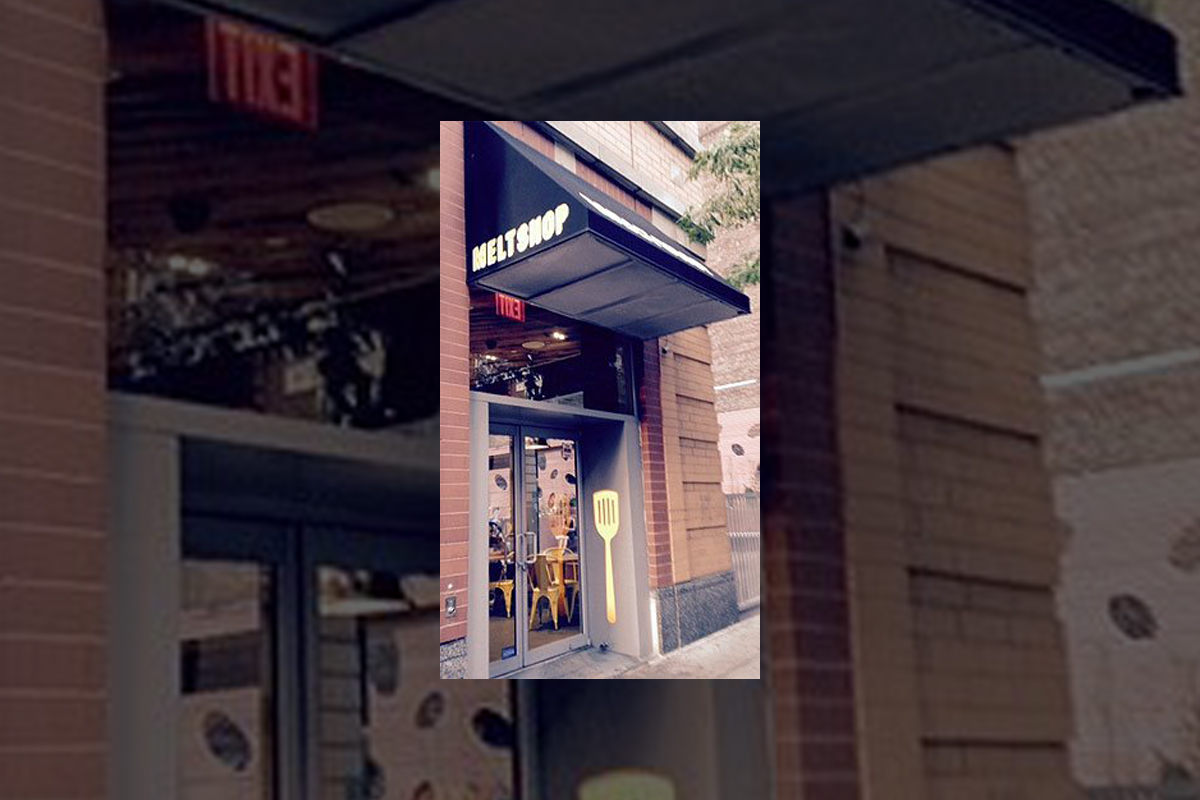
Greetings from NYC. Nancy and I drove down from New
Hampshire yesterday because we'll be checking out
Disney Consumer Products' annual Holiday Showcase later today.
Anyway … After checking into our hotel (i.e., The Paul.
Which is located down in NYC's NoMad district), we decided to grab some dinner.
Which is how we wound up at the Melt Shop.
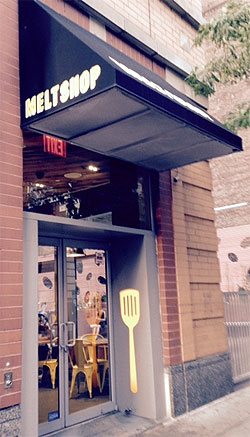
Photo by Jim Hill
Which is this restaurant that only sells grilled cheese sandwiches.
This comfort food was delicious, but kind of on the heavy side.

Photo by Jim Hill
Which is why — given that it was a beautiful summer night
— we'd then try and walk off our meals. We started our stroll down by the Empire
State Building
…
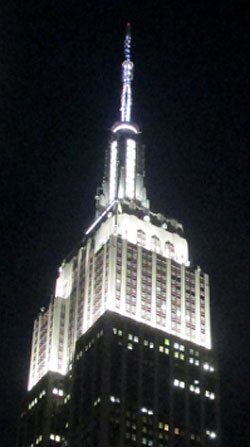
Photo by Jim Hill
… and eventually wound up just below Times
Square (right behind where the Waterford Crystal Times Square New
Year's Eve Ball is kept).

Photo by Jim Hill
But you know what we discovered en route? Right in the heart
of Manhattan's Garment District
along Broadway between 36th and 41st? This incredibly cool series of life-like
and life-sized sculptures that Seward
Johnson has created.

Photo by Jim Hill
And — yes — that is Abraham Lincoln (who seems to have
slipped out of WDW's Hall of Presidents when no one was looking and is now
leading tourists around Times Square). These 18 painted
bronze pieces (which were just installed late this past Sunday night / early
Monday morning) range from the surreal to the all-too-real.

Photo by Jim Hill
Some of these pieces look like typical New Yorkers. Like the
business woman planning out her day …

Photo by Jim Hill
… the postman delivering the mail …

Photo by Jim Hill
… the hot dog vendor working at his cart …

Photo by Jim Hill
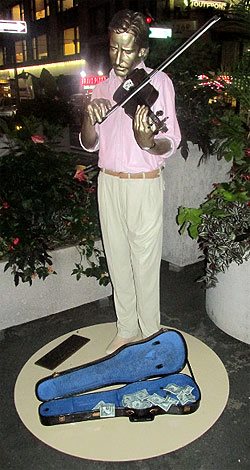
Photo by Jim Hill
… the street musician playing for tourists …

Photo by Jim Hill
Not to mention the tourists themselves.
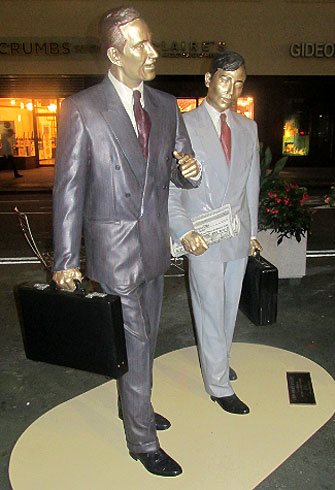
Photo by Jim Hill
But right alongside the bronze businessmen …

Photo by Jim Hill
… and the tired grandmother hauling her groceries home …
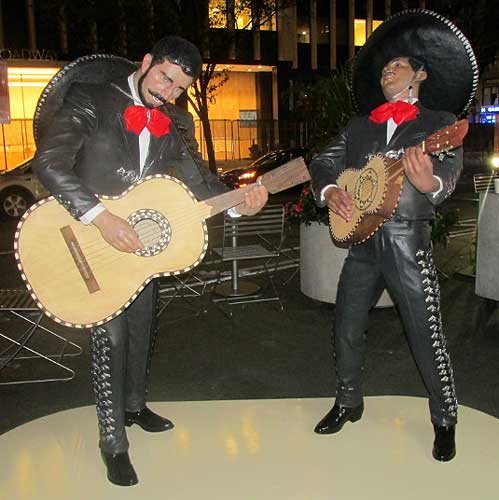
Photo by Jim Hill
… there were also statues representing people who were
from out-of-town …

Photo by Jim Hill
… or — for that matter — out-of-time.

Photo by Jim Hill
These were the Seward Johnson pieces that genuinely beguiled. Famous impressionist paintings brought to life in three dimensions.

Note the out-of-period water bottle that some tourist left
behind. Photo by Jim Hill
Some of them so lifelike that you actually had to pause for
a moment (especially as day gave way to night in the city) and say to yourself
"Is that one of the bronzes? Or just someone pretending to be one of these
bronzes?"
Mind you, for those of you who aren't big fans of the
impressionists …

Photo by Jim Hill
… there's also an array of American icons. Among them
Marilyn Monroe …
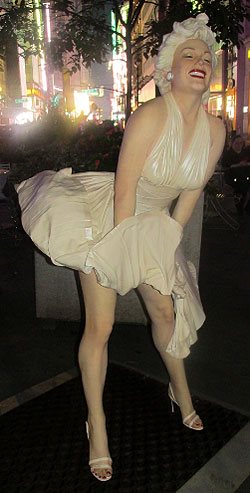
Photo by Jim Hill
… and that farmer couple from Grant Wood's "American
Gothic."

Photo by Jim Hill
But for those of you who know your NYC history, it's hard to
beat that piece which recreates Alfred Eisenstaedt's famous photograph of V-J Day in Times Square.

Photo by Jim Hill
By the way, a 25-foot-tall version of this particular Seward
Johnson piece ( which — FYI — is entitled "Embracing Peace") will actually
be placed in Times Square for a few days on or around August 14th to commemorate the 70th
anniversary of Victory Over Japan Day (V-J Day).

Photo by Jim Hill
By the way, if you'd like to check these Seward Johnson bronzes in
person (which — it should be noted — are part of the part of the Garment
District Alliance's new public art offering) — you'd best schedule a trip to
the City sometime over the next three months. For these pieces will only be on
display now through September 15th.
General
Wondering what you should “Boldly Go” see at the movies next year? The 2015 Licensing Expo offers you some clues

Greeting from the 2015 Licensing Expo, which is being held
at the Mandalay Bay
Convention Center in Las
Vegas.

Photo by Jim Hill
I have to admit that I enjoy covering the Licensing Expo.
Mostly becomes it allows bloggers & entertainment writers like myself to
get a peek over the horizon. Scope out some of the major motion pictures &
TV shows that today's vertically integrated entertainment conglomerates
(Remember when these companies used to be called movie studios?) will be
sending our way over the next two years or so.
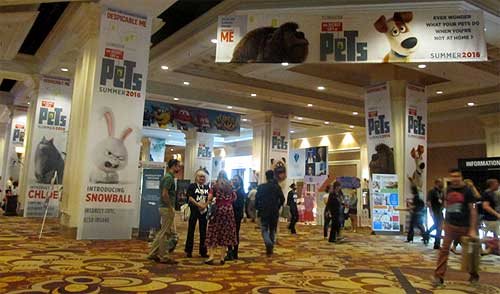
Photo by Jim Hill
Take — for example — all of "The Secret Life of
Pets" banners that greeted Expo attendees as they made their way to the
show floor today. I actually got to see some footage from this new Illumination
Entertainment production (which will hit theaters on July 8, 2016) the last time I was in Vegas. Which
was for CinemaCon back in April. And the five or so minutes of film that I viewed
suggested that "The Secret Life of Pets" will be a really funny
animated feature.

Photo by Jim Hill
Mind you, Universal Pictures wanted to make sure that Expo
attendees remembered that there was another Illumination Entertainment production
coming-to-a-theater-near-them before "The Secret Life of Pets" (And
that's "Minions," the "Despicable Me" prequel. Which
premieres at the Annecy International Animated Film Festival next week but
won't be screened stateside 'til July 10th of this year). Which is why they had
three minions who were made entirely out of LEGOS loitering out in the lobby.

Photo by Jim Hill
And Warner Bros. — because they wanted "Batman v
Superman: Dawn of Justice" to start trending on Twitter today — brought
the Batmobile to Las Vegas.
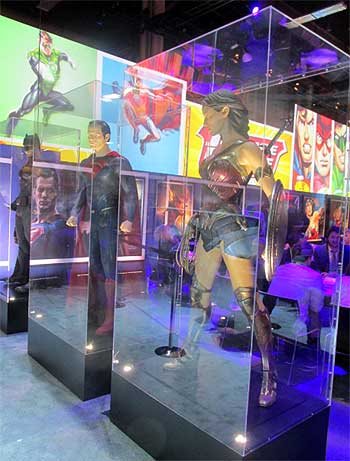
Photo by Jim Hill
Not to mention full-sized macquettes of Batman, Superman and
Wonder Woman. Just so conventioneers could then see what these DC superheroes
would actually look like in this eagerly anticipated, March 25, 2016 release.

Photo by Jim Hill
That's the thing that can sometimes be a wee bit frustrating
about the Licensing Expo. It's all about delayed gratification. You'll come
around a corner and see this 100 foot-long ad for "The Peanuts Movie"
and think "Hey, that looks great. I want to see that Blue Sky Studios production
right now." It's only then that you notice the fine print and realize that
"The Peanuts Movie" doesn't actually open in theaters 'til November
6th of this year.

Photo by Jim Hill
And fan of Blue Sky's "Ice Age" film franchise are in for an even
longer wait. Given that the latest installment in that top grossing series
doesn't arrive in theaters 'til July
15, 2016.

Photo by Jim Hill
Of course, if you're one of those people who needs immediate
gratification when it comes to your entertainment, there was stuff like that to
be found at this year's Licensing Expo. Take — for example — how the WWE
booth was actually shaped like a wrestling ring. Which — I'm guessing — meant
that if the executives of World Wrestling Entertainment, Inc. didn't like
the offer that you were making, they were then allowed to toss you out over the
top rope, Royal Rumble-style.

Photo by Jim Hill
I also have to admit that — as a longtime Star Trek fan —
it was cool to see the enormous Starship Enterprise that hung in place over the
CBS booth. Not to mention getting a glimpse of the official Star Trek 50th
Anniversary logo.
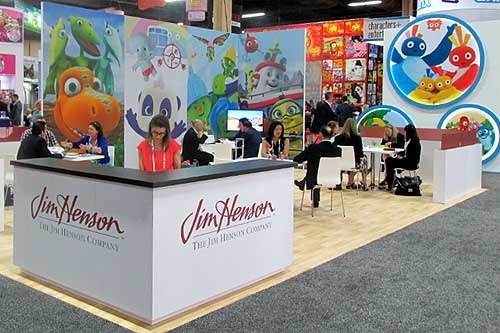
Photo by Jim Hill
I was also pleased to see lots of activity in The Jim Henson
Company booth. Which suggests that JHC has actually finally carved out a
post-Muppets identity for itself.

Photo by Jim Hill
Likewise for all of us who were getting a little concerned
about DreamWorks Animation (what with all the layoffs & write-downs &
projects that were put into turnaround or outright cancelled last year), it was
nice to see that booth bustling.

Photo by Jim Hill
Every so often, you'd come across some people who were
promoting a movie that you weren't entirely sure that you actually wanted to
see (EX: "Angry Birds," which Sony Pictures Entertainment / Columbia
Pictures will be releasing to theaters on May 20, 2016). But then you remembered that Clay Kaytis —
who's this hugely talented former Walt Disney Animation Studios animator — is
riding herd on "Angry Birds" with Fergal Reilly. And you'd think
"Well, if Clay's working on 'Angry Birds,' I'm sure this animated feature
will turn out fine."

Photo by Jim Hill
Mind you, there were reminders at this year's Licensing Expo
of great animated features that we're never going to get to see now. I still
can't believe — especially after that brilliant proof-of-concept footage
popped up online last year — that Sony execs decided not to go forward
with production of Genndy Tartakovsky's
"Popeye" movie. But that's the
cruel thing about the entertainment business, folks. It will sometime break
your heart.
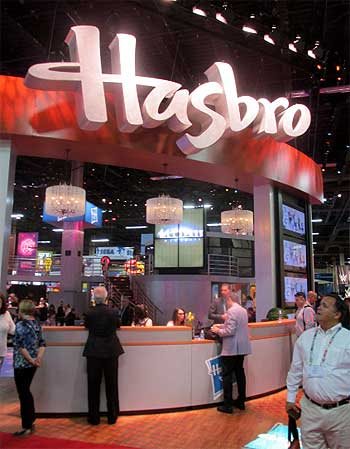
Photo by Jim Hill
And make no mistake about this. The Licensing Expo is all
about business. That point was clearly driven home at this year's show when —
as you walked through the doors of the Mandalay
Bay Convention Center
— the first thing that you saw was the Hasbros Booth. Which was this gleaming,
sleek two story-tall affair full of people who were negotiating deals &
signing contracts for all of the would-be summer blockbusters that have already
announced release dates for 2019 & beyond.

Photo by Jim Hill
"But what about The Walt Disney Company?," you
ask. "Weren't they represented on the show floor at this year's Licensing
Expo?" Not really, not. I mean, sure. There were a few companies there hyping
Disney-related products. Take — for example — the Disney Wikkeez people.
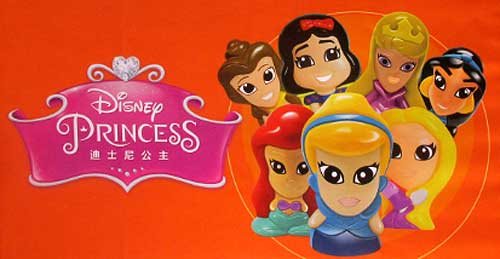
Photo by Jim Hill
I'm assuming that some Disney Consumer Products exec is
hoping that Wikkeez will eventually become the new Tsum Tsum. But to be blunt,
these little hard plastic figures don't seem to have the same huggable charm
that those stackable plush do. But I've been wrong before. So let's see what
happens with Disney Wikkeez once they start showing up on the shelves of the
Company's North American retail partners.

Photo by Jim Hill
And speaking of Disney's retail partners … They were
meeting with Mouse House executives behind closed doors one floor down from the
official show floor for this year's Licensing Expo.

Photo by Jim Hill
And the theme for this year's invitation-only Disney shindig? "Timeless
Stories" involving the Disney, Pixar, Marvel & Lucasfilm brands that
would then appeal to "tomorrow's consumer."

Photo by Jim Hill
And just to sort of hammer home the idea that Disney is no
longer the Company which cornered the market when it comes to little girls
(i.e., its Disney Princess and Disney Fairies franchises), check out this
wall-sized Star Wars-related image that DCP put up just outside of one of its
many private meeting rooms. "See?," this carefully crafted photo
screams. "It isn't just little boys who want to wield the Force. Little
girls also want to grow up and be Lords of the Sith."
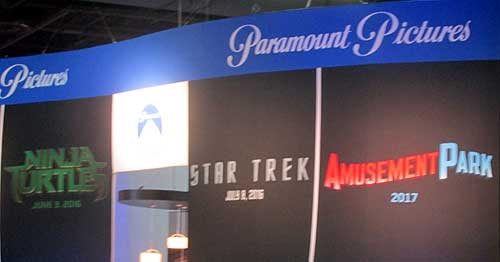
Photo by Jim Hill
One final, kind-of-ironic note: According to this banner,
Paramount Pictures will be releasing a movie called "Amusement Park"
to theaters sometime in 2017.

Photo by Jim Hill
Well, given all the "Blackfish" -related issues
that have been dogged SeaWorld Parks & Entertainment over the past two years, I'm
just hoping that they'll still be in the amusement park business come 2017.
Your thoughts?
General
It takes more than three circles to craft a Classic version of Mickey Mouse
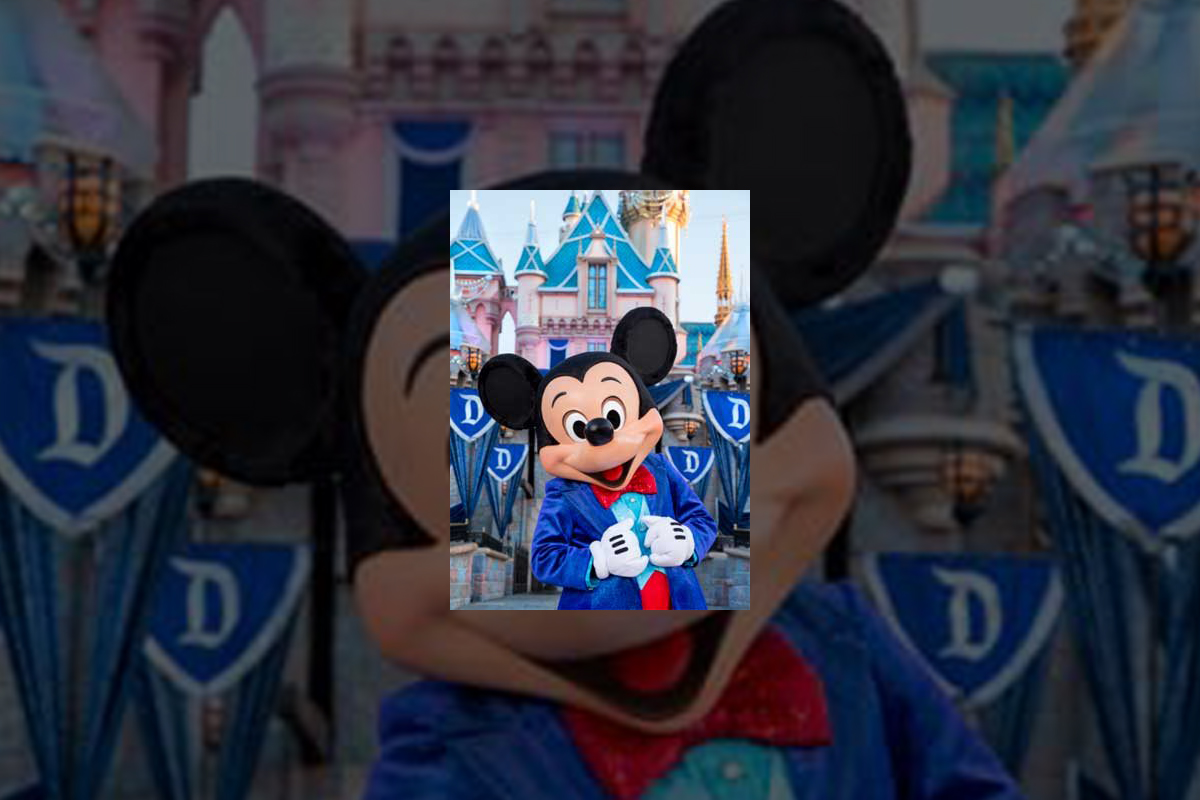
You know what Mickey Mouse looks like, right? Little guy,
big ears?
Truth be told, Disney's corporate symbol has a lot of
different looks. If Mickey's interacting with Guests at Disneyland
Park (especially this summer, when
the Happiest Place on Earth
is celebrating its 60th anniversary), he looks & dresses like this.
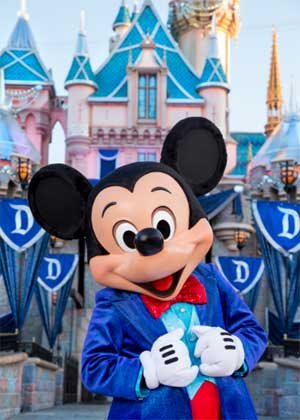
Copyright Disney Enterprises,
Inc.
All rights reserved
Or when he's appearing in one of those Emmy Award-winning shorts that Disney
Television Animation has produced (EX: "Bronco Busted," which debuts
on the Disney Channel tonight at 8 p.m. ET / PT), Mickey is drawn in a such a
way that he looks hip, cool, edgy & retro all at the same time.

Copyright Disney Enterprises, Inc. All rights
reserved
Looking ahead to 2017 now, when Disney Junior rolls out "Mickey and the
Roadster Racers," this brand-new animated series will feature a sportier version
of Disney's corporate symbol. One that Mouse House managers hope will persuade
preschool boys to more fully embrace this now 86 year-old character.

Copyright Disney Enterprises,
Inc. All rights reserved
That's what most people don't realize about the Mouse. The
Walt Disney Company deliberately tailors Mickey's look, even his style of
movement, depending on what sort of project / production he's appearing in.
Take — for example — Disney
California Adventure
Park's "World of Color:
Celebrate!" Because Disney's main mouse would be co-hosting this new
nighttime lagoon show with ace emcee Neil Patrick Harris, Eric Goldberg really had
to step up Mickey's game. Which is why this master Disney animator created
several minutes of all-new Mouse animation which then showed that Mickey was
just as skilled a showman as Neil was.

Copyright Disney Enterprises,
Inc.
All rights reserved
Better yet, let's take a look at what the folks at Avalanche Studios just went
through as they attempted to create a Classic version of Mickey & Minnie.
One that would then allow this popular pair to become part of Disney Infinity
3.0.
"I won't lie to you. We were under a lot of pressure to
get the look of this particular version of Mickey — he's called Red Pants
Mickey around here — just right," said Jeff Bunker, the VP of Art
Development at Avalanche Studios, during a recent phone interview. "When
we brought Sorcerer Mickey into Disney Infinity 1.0 back in January of 2014,
that one was relatively easy because … Well, everyone knows what Mickey Mouse
looked like when he appeared in 'Fantasia.' "

Copyright Disney Enterprises,
Inc. All rights reserved
"But this time around, we were being asked to design
THE Mickey & Minnie," Bunker continued. "And given that these Classic
Disney characters have been around in various different forms for the better
part of the last century … Well, which look was the right look?"
Which is why Jeff and his team at Avalanche Studios began watching hours &
hours of Mickey Mouse shorts. As they tried to get a handle on which look would
work best for these characters in Disney Infinity 3.0.

Copyright Disney
Enterprises, Inc. All rights reserved
"And we went all the way back to the very start of Mickey's career. We began
with 'Steamboat Willie' and then watched all of those black & white Mickey shorts
that Walt made back in the late 1920s & early 1930s. From there, we
transitioned to his Technicolor shorts. Which is when Mickey went from being
this pie-eyed, really feisty character to more of a well-behaved leading
man," Bunker recalled. "We then finished out our Mouse marathon by
watching all of those new Mickey shorts that Paul Rudish & his team have
been creating for Disney Television Animation. Those cartoons really recapture
a lot of the spirit and wild slapstick fun that Mickey's early, black &
white shorts had."
But given that the specific assignment that Avalanche Studios had been handed
was to create the most appealing looking, likeable version of Mickey Mouse
possible … In the end, Jeff and his team wound up borrowing bits & pieces
from a lot of different versions of the world's most famous mouse. So that
Classic Mickey would then look & move in a way that best fit the sort of
gameplay which people would soon be able to experience with Disney Infinity
3.0.

Copyright Disney Enterprises,
Inc. All rights reserved
"That — in a lot of ways — was actually the toughest
part of the Classic Mickey design project. You have to remember that one of the
key creative conceits of Disney Infinity
is that all the characters which appear in this game are toys," Bunker
stated. "Okay. So they're beautifully detailed, highly stylized toy
versions of beloved Disney, Pixar, Marvel & Lucasfilm characters. But
they're still supposed to be toys. So our Classic versions of Mickey &
Minnie have the same sort of thickness & sturdiness to them that toys have.
So that they'll then be able to fit right in with all of the rest of the
characters that Avalanche Studios had previously designed for Disney Infinity."
And then there was the matter of coming up with just the
right pose for Classic Mickey & Minnie. Which — to hear Jeff tell the
story — involved input from a lot of Disney upper management.

Copyright Disney Enterprises,
Inc. All rights reserved
"Everyone within the Company seemed to have an opinion
about how Mickey & Minnie should be posed. More to the point, if you Google
Mickey, you then discover that there are literally thousands of poses out there
for these two. Though — truth be told — a lot of those kind of play off the
way Mickey poses when he's being Disney's corporate symbol," Bunker said.
"But what I was most concerned about was that Mickey's pose had to work
with Minnie's pose. Because we were bringing the Classic versions of these
characters up into Disney Infinity 3.0 at the exact same time. And we wanted to
make sure — especially for those fans who like to put their Disney Infinity
figures on display — that Mickey's pose would then complement Minnie.
Which is why Jeff & the crew at Avalanche Studios
decided — when it came to Classic Mickey & Minnie's pose — that they
should go all the way back to the beginning. Which is why these two Disney icons
are sculpted in such a way that it almost seems as though you're witnessing the
very first time Mickey set eyes on Minnie.

Copyright Disney Enterprises,
Inc. All rights reserved
"And what was really great about that was — as soon as
we began showing people within the Company this pose — everyone at Disney
quickly got on board with the idea. I mean, the Classic Mickey that we sculpted
for Disney Infinity 3.0 is clearly a very playful, spunky character. But at the
same time, he's obviously got eyes for Minnie," Bunker concluded. "So
in the end, we were able to come up with Classic versions of these characters
that will work well within the creative confines of Disney Infinity 3.0 but at
the same time please those Disney fans who just collect these figures because
they like the way the Disney Infinity characters look."
So now that this particular design project is over, does
Jeff regret that Mouse House upper management was so hands-on when it came to
making sure that the Classic versions of Mickey & Minnie were specifically
tailored to fit the look & style of gameplay found in Disney Infinity 3.0?

Copyright Lucasfilm / Disney
Enterprises, Inc. All rights reserved
"To be blunt, we go through this every time we add a new character to the
game. The folks at Lucasfilm were just as hands-on when we were designing the
versions of Darth Vader and Yoda that will also soon be appearing in Disney
Infinity 3.0," Bunker laughed. "So in the end, if the character's
creators AND the fans are happy, then I'm happy."
This article was originally posted on the Huffington Post's Entertainment page on Tuesday, June 9, 2015
-

 Film & Movies8 months ago
Film & Movies8 months agoBefore He Was 626: The Surprisingly Dark Origins of Disney’s Stitch
-

 History6 months ago
History6 months agoCalifornia Misadventure
-

 History11 months ago
History11 months agoThe Super Bowl & Disney: The Untold Story Behind ‘I’m Going to Disneyland!’
-

 Film & Movies7 months ago
Film & Movies7 months agoThe Best Disney Animation Film Never Made – “Chanticleer”
-

 Television & Shows12 months ago
Television & Shows12 months agoHow the Creators of South Park Tricked A-List Celebrities to Roast Universal – “Your Studio & You”
-

 Theme Parks & Themed Entertainment6 months ago
Theme Parks & Themed Entertainment6 months agoThe ExtraTERRORestrial Files
-

 Television & Shows9 months ago
Television & Shows9 months agoThe Untold Story of Super Soap Weekend at Disney-MGM Studios: How Daytime TV Took Over the Parks
-

 History7 months ago
History7 months agoWhy Disney’s Animal Kingdom’s Beastly Kingdom Was Never Built






